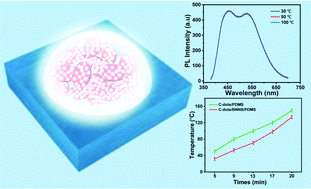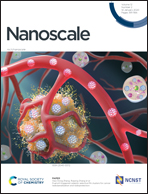Electrostatically assembled carbon dots/boron nitride nanosheet hybrid nanostructures for thermal quenching-resistant white phosphors†
Abstract
Carbon dots (C-dots) are promising and widely applied carbon fluorescent materials for next-generation white light-emitting diodes (WLEDs). However, nonnegligible thermal quenching issues induced by high working temperature of high-power WLEDs severely limit the further development of C-dot phosphors. In this paper, we report an efficient strategy to improve thermal dissipation within C-dot phosphors to solve the thermal quenching problem. C-dots/hexagonal boron nitride nanosheet (BNNS) hybrid nanostructures have been firstly prepared through an electrostatic assembly method. Owing to the effective heat transfer channels established by C-dots/BNNS in a polymer matrix, heat could be dissipated efficiently and the working temperature of WLEDs is reduced by 29 °C, suggesting excellent thermal quenching-resistance properties. Particularly, the hybrids show thermally stable emission without obvious emission loss up to 100 °C. Moreover, the C-dots/BNNS-WLEDs still maintain a high color rendering index of Ra > 89, revealing that the present strategy could promote the exploration of carbon phosphors with thermal quenching resistance for high-quality LED applications.



 Please wait while we load your content...
Please wait while we load your content...